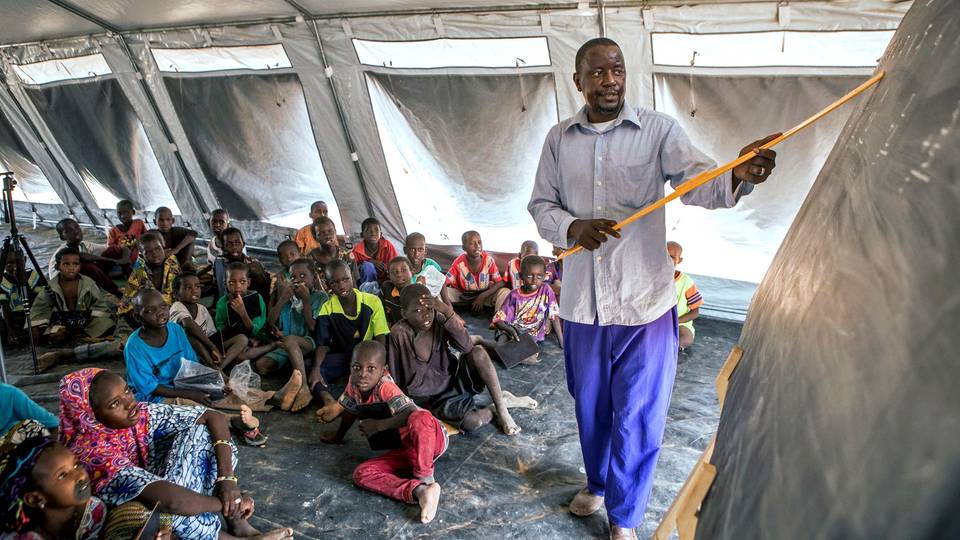Sport
Dollar
38,2552
0.34 %Euro
43,8333
0.15 %Gram Gold
4.076,2000
0.31 %Quarter Gold
6.772,5700
0.78 %Silver
39,9100
0.36 %Many countries in the region are not investing enough in these critical aspects, leaving their populations vulnerable, despite early warnings being issued in good time.

By Guleid Artan and Jully Ouma,
The need for efficient Multi-Hazard Early Warning (MHEW) systems has never been more pressing in an era of growing urbanisation and increasing climate variability.
The MHEW system is significant in mitigating the impact of diverse natural hazards and underscores their role in safeguarding vulnerable communities in the Inter-Governmental Authority on Development (IGAD) region.
The IGAD region is characterised by its diverse geography, climate, and complex socio-economic dynamics, making it highly vulnerable to a wide range of hazards, including droughts, food insecurity, floods, landslides, epidemics, and geological events.

Therefore, it's critical to set up a comprehensive MHEW system tailored to the unique challenges and opportunities of the IGAD region, hence the establishment of the IGAD Disaster Operations Centre (DOC) - Situations Room which is housed at the IGAD Climate Prediction and Applications Centre (ICPAC)
Disasters in the Region
Eastern Africa is prone to disasters that harm its economy, ecology, and people. The region suffered from prolonged drought (2020 - 2022), which caused food and water shortages and left millions of people in need of aid.
In 2023, the IGAD region has been devastated by floods. Rainy seasons bring riverine flooding that displaces people and destroys infrastructure, and this has been worsened by the ongoing El Nino event which has affected millions of people in the region (Figures 2 and 3). The countries that are worst affected are Somalia, Kenya, and Ethiopia.
Challenges at country level
Despite the increasing frequency and severity of these disasters, several challenges persist in terms of what countries in Eastern Africa are not doing to effectively reduce their impact.
One of the primary issues is the lack of adequate preparedness measures or early action in many Eastern African countries.
Preparedness involves effective use of early warning systems/information, creating disaster response plans, and conducting drills to ensure communities are ready to respond to disasters promptly.
Many countries in the region are not investing enough in these critical aspects, leaving their populations vulnerable, despite early warnings being issued in good time.
Insufficient investment in infrastructure capable of mitigating the effects of disasters is an additional obstacle.
For example, the implementation of flood barriers, road networks, and resilient building structures can substantially mitigate the destructive effects of earthquakes and floods.
Regrettably, the coexistence of competing priorities and resource constraints frequently results in substandard infrastructure development, thereby exposing communities to the risk of disasters.

Education and awareness campaigns among the public are vital to disaster risk reduction.
Nevertheless, numerous Eastern African nations fail to adequately inform their populations regarding the dangers they encounter and the requisite protocols to follow in the event of a catastrophe.
In emergencies, this dearth of awareness may result in suboptimal decision-making and postponed responses.
Disasters often do not respect national borders, and regional cooperation is essential for effective disaster risk reduction.
Unfortunately, Eastern African countries face challenges in establishing strong regional partnerships and sharing resources and expertise. This fragmentation can hinder the collective response to disasters.
Early Warning Progress at ICPAC

In recent years, significant progress has been made in East Africa's early warning flood forecasting due to technological innovations and enhanced modeling techniques.
ICPAC is the regional leader in flood forecasting and operates a public water portal that provides weekly river flow forecasts with multiple return period thresholds that are capable of inducing riverine flooding (Figure 4).
To address some of the country's challenges ICPAC has started to invest in anticipatory action (AA), which has been identified as the early warning system's weakest link.
The AA initiative will provide clear guidelines on what actions countries should take based on a given warning and the number of resources that will be required to act early.
ICPAC and representatives of member states unveiled the regional AA roadmap and the multi-hazard early warning framework (Figure 5) at COP-28. Prior to the occurrence of a disaster, these two documents will be instrumental in guiding ICPAC and its member states to act swiftly.
Authors are Guleid A. Artan, Director of IGAD-Climate Prediction and Application Center (ICPAC) and Jully Ouma, disaster risk reduction specialist.
Disclaimer: The views expressed by the authors do not necessarily reflect the opinions, viewpoints and editorial policies of TRT Afrika.
➤Click here to follow our WhatsApp channel for more stories.
Comments
No comments Yet




















Comment